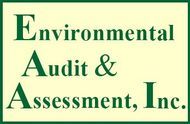The Importance Of Environmental Site Assessments
Several factors require consideration when investing in commercial real estate. The buyers need to properly research and do due diligence before closing any deal. One of these factors that no commercial property buyer should ignore is ESA or Environmental site assessment. Purchasing a commercial property is not a small thing. It needs investing thousands or millions of dollars, and the buyer needs to limit his liability and ensure that he makes no mistakes during the process.
What is ESA?
Commercial properties have an impact on the surrounding ecosystem. Environmental site assessment includes a comprehensive review of the environmental conditions at a particular site. It is conducted to evaluate the risk of environmental liability of a real estate property by identifying and assessing potential contaminants. The process can be conducted in two phases.
Phase I includes reviewing documents containing everything that was used and manufactured on the site previously, a visual assessment of the property and surrounding areas, interviews of the concerned key personnel, and a detailed report. Phase II includes conducting soil and water testing to determine if contamination is present, to what extent, and remediation options.
Importance of Environmental Site Assessment
Performing environmental site assessment before buying any commercial real estate property is essential for the following reasons:
Avoid Federal liability
The purpose of introducing ESA Phase I under federal regulations was to protect potential buyers from the Comprehensive Environmental Response, Compensation, and Liability Act (CERCLA), known commonly as Superfund, liabilities. Even if no environmental concerns are found during the assessment, the owner stays protected from being held liable if contamination emerges later. The properly carried out Phase I ESA acts as proof of due diligence. The cost of federal liabilities can touch millions.
Avoid business risks
If the buyer does not suspect any contamination while purchasing the property, but if it emerges later on and brought to the attention of the authorities, it may mean serious trouble. Even if the contamination is a result of the activities performed by the previous owner during usage of that property, the authorities will close down the business till the owner takes care of the contamination. The laws put restrictions on the property use or lease out. The cost of clean-up can come to tens of thousands or millions of dollars, and the owner has to bear it even when they are not responsible for the hazards. An appropriately executed Phase I ESA can identify any localized contamination issue and protects the owner.
Fulfill lender requirements
Phase I ESA is a must if a lending institution is involved in a commercial real estate transaction. While lenders inquire a lot of things before issuing a loan, they always certainly review the Phase I ESA to ensure there is no hidden contamination that can affect the property’s value or the borrower’s ability to repay the loan. No lending institution issues a loan to the purchaser without a Phase I ESA certificate.
Prevent losses while selling
If a purchaser buys a commercial property without carrying out an environmental site assessment, and the property turns out to be contaminated, selling it will become impossible without proper clean up. The remediation cost will depend on the property area and contamination level. The owner has to bear the remediation cost before selling the property.
Anyone considering buying a commercial property, including banks, contractors, developers, private individuals, architects, commercial companies, or residential property owners, should consider conducting an environmental site assessment. It is similar to a background check before getting involved in anything. If you are looking for an investment in commercial real estate, get in touch with an
environmental audit and assessment company for ESA.
